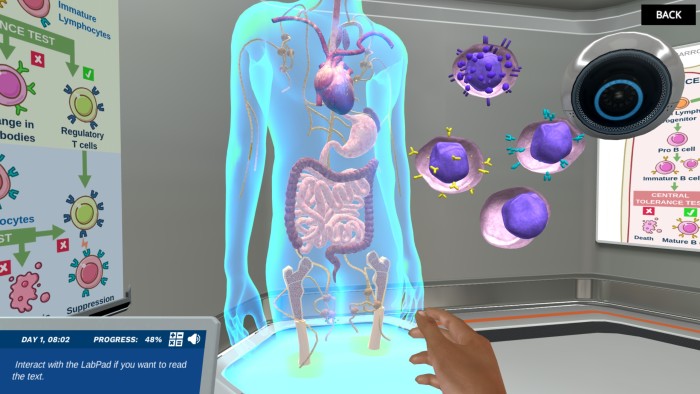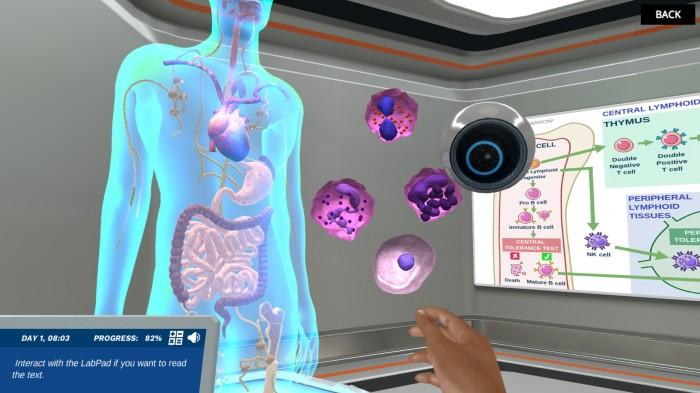
Immunology is a captivating frontier of biological science that delves into the wondrous complexities of the immune system; an extraordinary defense mechanism system evolved to safeguard organisms from diverse threats. At the core of immunology lies an intricate network of cells, tissues, and molecules that need to be introduced to students when teaching about the basics of the subject.
Explaining the intricacies of how the different components of the immune system work harmoniously and orchestrate “detection and elimination mechanisms” can be quite challenging for educators due to the novelty of the terms and ideas. Further, informing students about the complex mechanisms of self-tolerance, a different array of pathogens and their specific elimination methods can come as a task!
For this reason, we have compiled 5 creative ways in which you can tackle the peculiarities of immunology in your next lecture.
Planned integration of engaging models and simulations can vastly enhance the comprehension of wide-scoped subjects like Immunology. By thoughtfully incorporating simulative environments as in Labster’s Immunology Simulation focusing on “organs and cells of the immune system” where students can actively learn about the different components of immune systems, their respective roles and significance and their mechanisms of actions to restrict the invading pathogens can cultivate an effective learning environment.
In an ode to help our students explore immunology’s nuances with enthusiasm and clarity, we have to nurture a genuine appreciation amongst new learners for the indispensable role of the immune system in human health and disease prevention. By leveraging these dynamic tools, we can elucidate the “intricacies of immune responses” and “infection dynamics” with unparalleled clarity.
Educators can simplify various Immunology concepts by gamifying the basic underlying science concepts. Science has evidence that experiential learning approaches have the power to greatly transform the way learners imbibe ideas and the same holds for core ideas of Immunology.

Educators can plan on integrating tech tools in their immunology lesson plans to cater to the diverse learning styles of students. For nurturing a generation of informed and passionate scientists who appreciate the critical role of immunology in maintaining human health and combating infectious diseases worldwide, we must clear the core ideas with precision.
You can plan on integrating simulations where learners can explore the inner workings of immune cells and tissues in a 3D Labster Virtual environment while also witnessing how they detect and combat pathogens in real time. The use of web-based platforms is also recommended as they help in the evaluation of students’ knowledge of immune cell types, antigen-antibody interactions, and immune memory. You can also plan on incorporating webinars and online lectures from experts in the field to broaden students’ perspectives and provide valuable insights into cutting-edge research and applications in immunology.

Discover Labster's Immunology virtual lab today!
We need to emphasize the fact that a logical understanding of immunology subject opens up a plethora of career prospects and contributes significantly to professional success across various fields of healthcare, research, and public health.
Another way that educators can underscore the importance of immunology in the real world is by showcasing how it impacts public health, disease control, and global well-being. When you point out the areas and current issues that are solved by immunology experts, you can inspire the students to make a leap. You can conduct discussions on current topics like:
Teaching immunology with new methods is crucial for young and next-gen scientists as it enhances engagement and real-world relevance. Whenever teaching such large-impact topics, we have to inspire them to address pressing global health challenges with innovative solutions in the future. Equipped with cutting-edge techniques, Labster through its simulations (Simulation-1, Simulation-2) aims to drive the passion of the next generation of scientists in medical research, disease control, and healthcare delivery, ultimately helping them contribute to a healthier and more resilient world!
Try our free 30-day All Access Educator's Pass today and teach with the Immunology simulation alongside 300+ other virtual labs!

Labster helps universities and high schools enhance student success in STEM.
Request DemoRequest a demo to discover how Labster helps high schools and universities enhance student success.
Request Demo